
Introduction Of Sash Window
Common in older buildings, sash windows slide up and down a vertical track. A sash window has two framed panes of glass that slide vertically up and down.
A sliding sash window is a more precise term for this type of window. This type of window unit is installed in a frame that has vertical grooves so that it may be raised and lowered easily without damaging the frame below it.
There are counterbalances, which are weights on cords and pulleys, to help raise and lower the sashed.
These balances might be concealed inside the window’s frame or displayed openly on the window’s inside.
Some updated versions of the sliding sash window design can tilt in for easier cleaning, but traditionally they have not had hinges and cannot open outward.
In this context, “sash window” refers to any type of window that slides up and down rather than opening outwards on a hinge.
That’s because there’s no outward swing. Sash windows, on the other hand, can be opened either vertically or horizontally to let in some fresh air.
The two sashes make up a standard sash window’s sliding mechanism. The sashes are inserted into the frame sequentially.
Both sashes rest in vertical grooves and are balanced by weights attached to a sash cord that is concealed within the window’s frame.
Double-hung windows are exactly what they sound like. The windows are not only effortless to open but also remain in the place you last left them in, all thanks to the careful balancing of the weights.
Sash windows have either a top or bottom opening or sometimes both. The sash (the glazed portion) is made up of many individual panes of glass secured by glazing bars. Your home’s age dictates the number of window panes it has.
In fact, there are some earliest instances that are double-glazed. These sash windows are still operated in the same manner, but their appearance has evolved over time as a result of advances in glassmaking and other technology.
Why Is It Called a Sash Window?
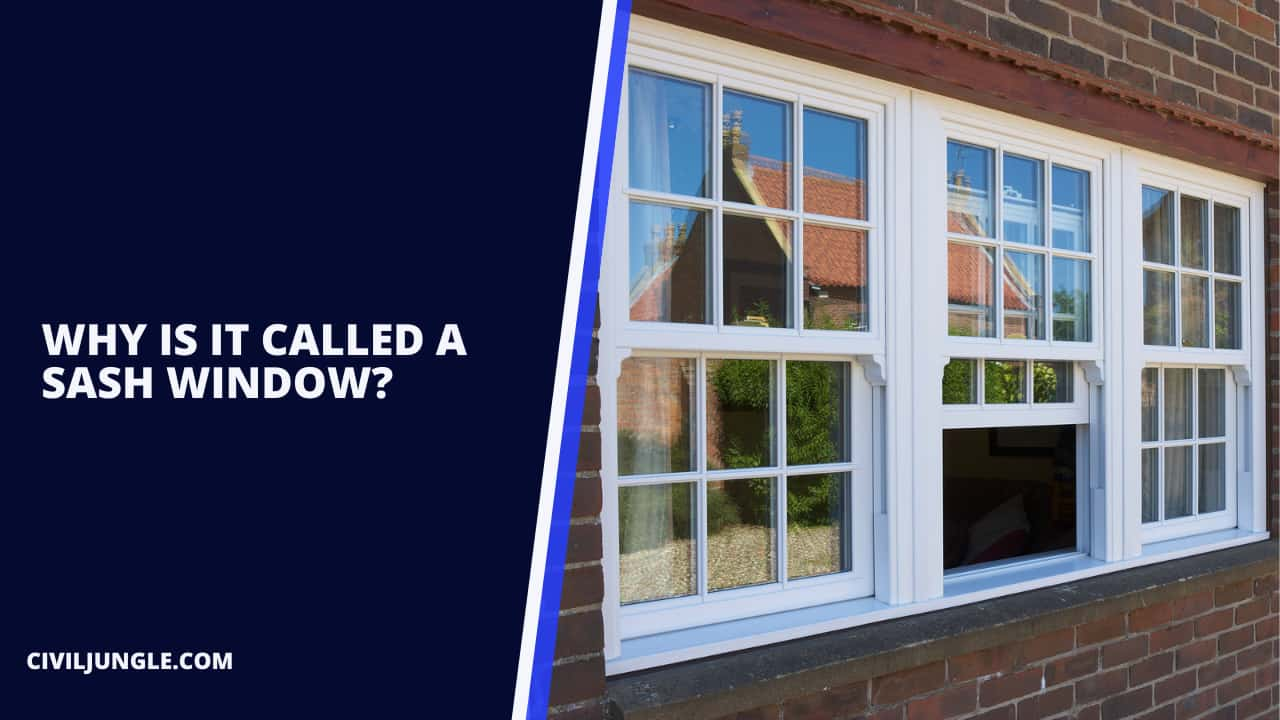
This style of window gets its name from the word that carpenters and woodworkers originally used to describe the item.
Frame and sash are the two main components of a sash window (the window bit).
Given that sash windows were developed and popularised in France, it’s possible that the term “sash” was imported to England by French joiners.
What Does a Sash Window Look Like?

Each pane of glass in a window sash is separated from one another by a metal or wooden glazing bar. To facilitate opening, the window sashes are divided in half and slightly offset.
The number of smaller panes of glass in window sashes varies with era, both the original and the copy. While single-glazed sashes are the norm, double-glazed sashes do exist.
Double-glazed hanging sash windows are a specialty of Chameleon’s, and they always manage to accomplish so without compromising the windows’ classic look.
Also Read: All About Transom Window | What Is a Transom Window | Types of Transom Window
What Does Sash Mean?

The name “sash” was coined by joiners to describe the window pane of the new sash windows when they were imported to England from France.
The sash and the window frame were separate components in the past. These days, the term “sash” is used to refer to any window that does not open on a hinge but rather by means of counterweights in the window frame and offset panes of glass.
Useful Article For You
- What Is a Contour Interval
- What Is a Spread Footing
- What Is a Flight of Stairs
- What Is a Pitched Roof
- What Is a Parapet
- What Are Abutments on a Bridge
- What Is Grouting
- What Is Gypsum Board
- What Is Cmu in Construction
- What Is Flooring
- What Are Tiles
- What Is Modulus of Rupture
- What Is a Grade Beam
- What Is Rcc Value Day
- What Is Rebar
- What Is Soffit
- What Is a Roof Overhang Called
- What Is Crane
- What Is a Cold Joint in Concrete
- What Is a Moment Frame
- What Is Standard Water Pipe Size in Residential
- What Is Cinder Block
- What Is a Frost Wall
- What Is Isometric View
- What Is Shoring
- Glazed Windows Meaning
What Are Different Types of Sash Windows?

Around the middle of the 17th century, sash windows as we know them now were developed in London. In the 13th century, sash windows appeared in France.
This stunning window design would eventually influence British architecture for hundreds of years.
Sash windows were most popular during the Georgian, Edwardian, and Victorian eras, which are reflected in the three primary design styles.
Choosing the perfect sash window design is crucial to the overall aesthetic of your home. For instance, Victorian sash windows wouldn’t go with a Georgian home’s aesthetic.
Reputable window repair businesses will be familiar with the specific sash window design your house needs. The look of the house must not change even if double-pane windows are fitted.
The sash window isn’t the only option available. Sash windows made of aluminum or uPVC are available for contemporary properties.
Georgian Sash Windows

Six panes of glass (or “six over six”) is the standard number for Georgian sash windows, which are constructed by combining two window sections.
Victorian Sash Windows

In the Victorian era, advances in glassmaking technology allowed for the production of larger glass sheets. A defining feature of Victorian sash windows is their ‘two over two’ arrangement.
Each panel consists of two individual panes of glass held together in the vertical orientation by a single glazing bar.
Edwardian Sash Windows

They’re over two’ configuration is typical of Edwardian sash windows. As a reaction to the cramped conditions of the Victorian era, Edwardian architects prioritized creating airy interiors.
Many more windows were installed, some almost reaching the ceiling, to let in as much natural light as possible.
That might be accomplished by constructing the lower unit out of two pieces of glass, eliminating the need for vertical window bars and so increasing the amount of natural light available.
The upper windows are Georgian in design, with six panes. This style is also known as “Neo-Georgian.” Stained or colored glass was sometimes used for the upper windows.
After the First World War, steel or timber casement windows, which were simpler to construct, began to replace sash windows.
In spite of falling out of favor in the decades following the Great Depression, sash windows have recently had a renaissance in favor.
Yorkshire Sliding Sash Windows

Sash windows typical in Yorkshire, England, slide horizontally. These windows are uncommon since either glass may be opened.
Sash Windows Repair?
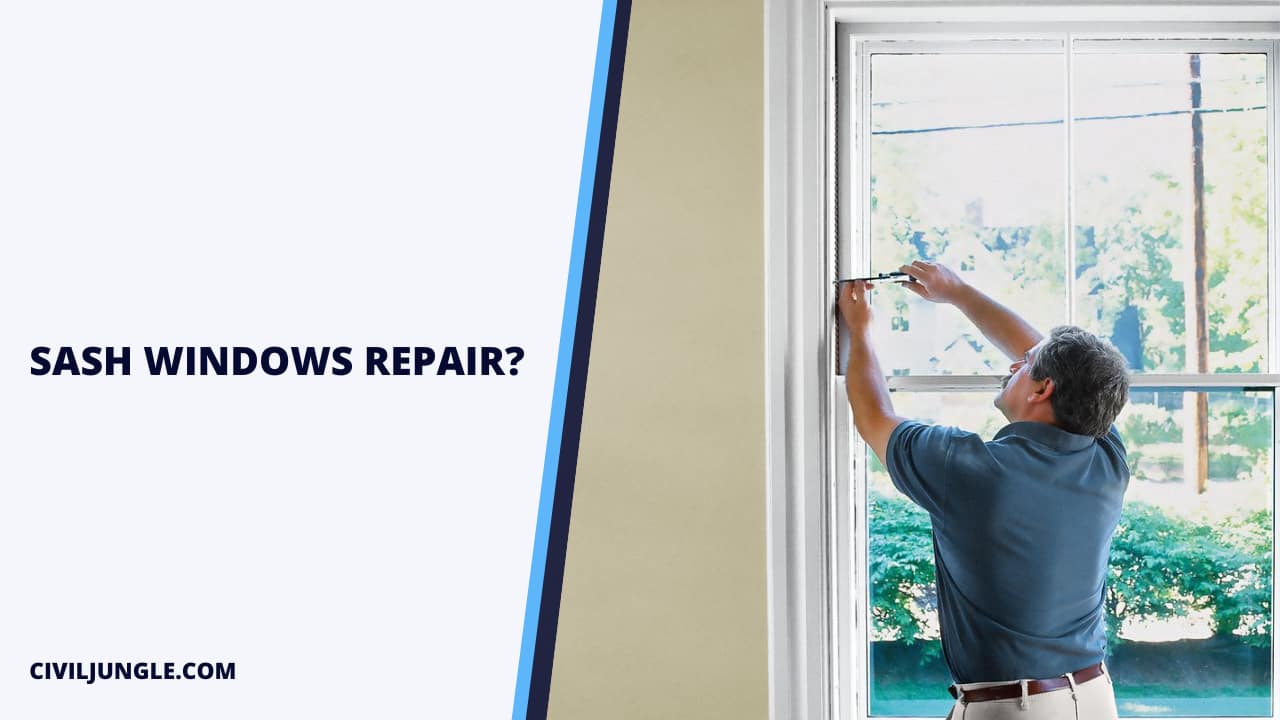
The majority of sash and case window damage is easily fixable. All but the most severely damaged panes of glass may typically be repaired.
Most original sash windows were constructed from heartwood timber, a type that is now exceedingly rare.
Maintaining the original wood and fixing it up makes more sense than completely replacing it with new wood that may rot faster.
You probably won’t fix the windows by yourself. But before you hire a joiner, you should give the window a thorough inspection.
A mutual understanding of the scope and cost of the work at hand will be facilitated by this.
How to Repair Sash Windows?
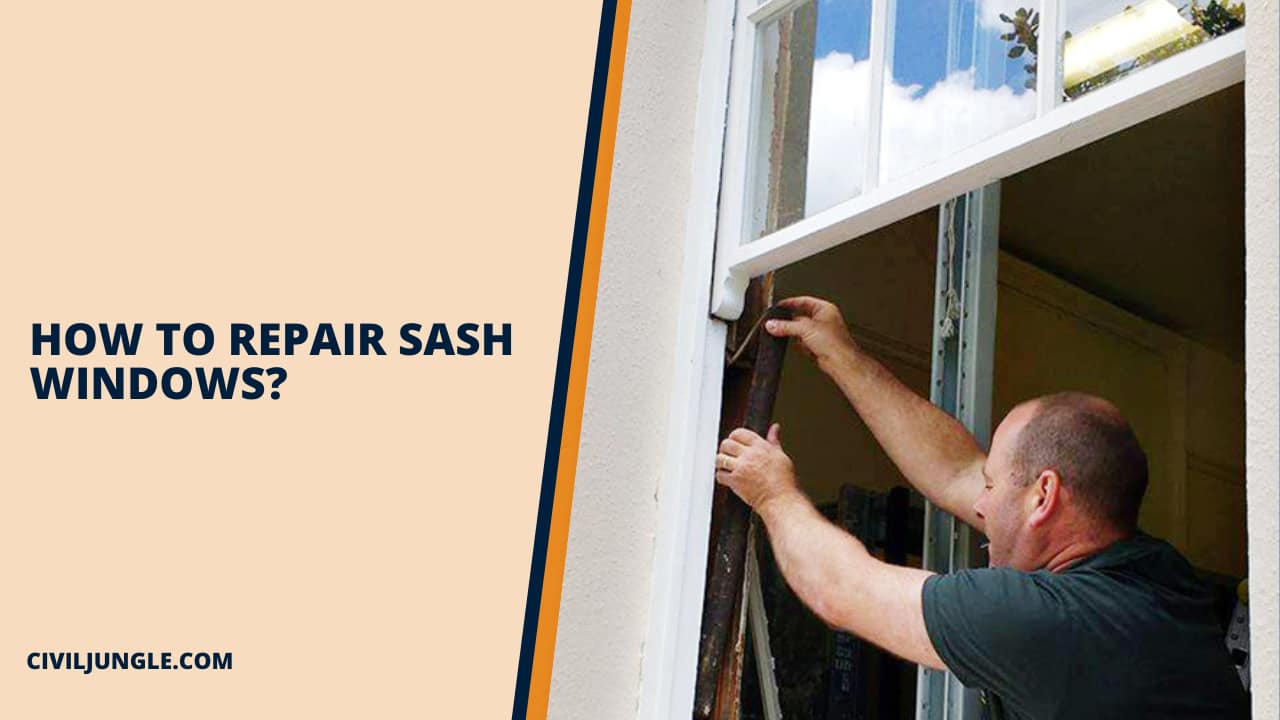
Step -1: Take Out the Sash.
- Unscrew or pry off the brakes (the moldings in front of the lower sash).
- Disengage the bottom sash’s cables or chains and remove them.
- Avoid having the cords sucked into the weight pockets by tying a knot in them.
- Bring down the closing beads (the vertical strips holding the upper sash).
- Take off the upper sash’s cords or chains by pulling it outward.
- To keep the sash intact, remove the hardware and place it in a labeled bag.
Step – 2: Unlock the Window Pane.
Use a heat gun with a nozzle shield and a medium setting to thaw out old, hardened putty (glazing compound). Use a putty knife to scrape off the old putty.
With the metal glazier’s points now exposed, pry them free from the wood. Get rid of the pane of glass and mark it, so you know which slot it belongs in when you replace it.
Step – 3: Be Sure to Flush the Joints.
Sash joints that are loose or open should have any soft or rotting wood ground away with a rotary tool like a Dremel.
Step – 4: Incorporate the Epoxy.
As a preliminary step in reassembling the decontaminated joints, brush on the epoxy primer and allow it to cure for 20 minutes. Then, combine the epoxy filler’s two components into a thick paste with a plastic scraper.
Work the mixture into the crack and out to the sides to return the crack to its former shape. Just let it be a night, and in the morning, you may use a utility knife to get rid of the extra.
Step – 5: Fix the Sash’s Priming.
After waiting a day for the epoxy to set completely, you can go ahead and hand-sand the sash with 100-grit paper before wiping away the dust with a tack cloth. Apply an oil-based primer to the wood to preserve it.
Step – 6: Place the Glass on the Bed.
Place the sash with the outside facing up. The glazing compound is applied by rolling a long rope in one’s hands and then pressing it into the rabbet that surrounds the window pane.
Spread the bedding compound uniformly across the pane and press gently until the glass is bedded about 1/16 inch from the rabbet’s bottom.
Step – 7: Put in Your Points.
Insert the new glass panes, point-first, into the wooden sash by sliding a putty knife along the glazier’s tip on each pane. Create a grid with at least two points on each side of the window. Large windows shouldn’t have more than 12 inches between the points.
Step – 8: Use Putty.
Wrap the window with another rope of compound. Use a putty knife to smooth out the compound between the glass and the sash. Do the same with the other windows.
Apply an oil-based primer over the putty after waiting at least a week. The putty and sash need a final coat of acrylic latex paint.
Step – 9: Put the sash back on.
Weatherstripping should be replaced if it is outdated or added if there is none around the windows. For weatherproofing a window, refer to the relevant guidelines.
Pulley axles should be sprayed with silicone or Teflon spray, and then cleaned and reattached.
Pull the dividing beads back through the loops in the sash or attach fresh ones. Reattach both stops to the jamb and hook the cords or chains to the bottom sash to hold it in place while you fix the window.
Useful Article For You
- Pony Wall
- Wall Putty
- Well Point
- Weep Holes
- Lean to Roof
- Types of Doors
- Bags of Concrete
- Hydraulic Cement
- Average Door Height
- Pier and Beam Foundation
- Queen Size Bed Dimensions in Feet
- How Much Does a Gallon of Water Weigh
Advantages of Sash Windows
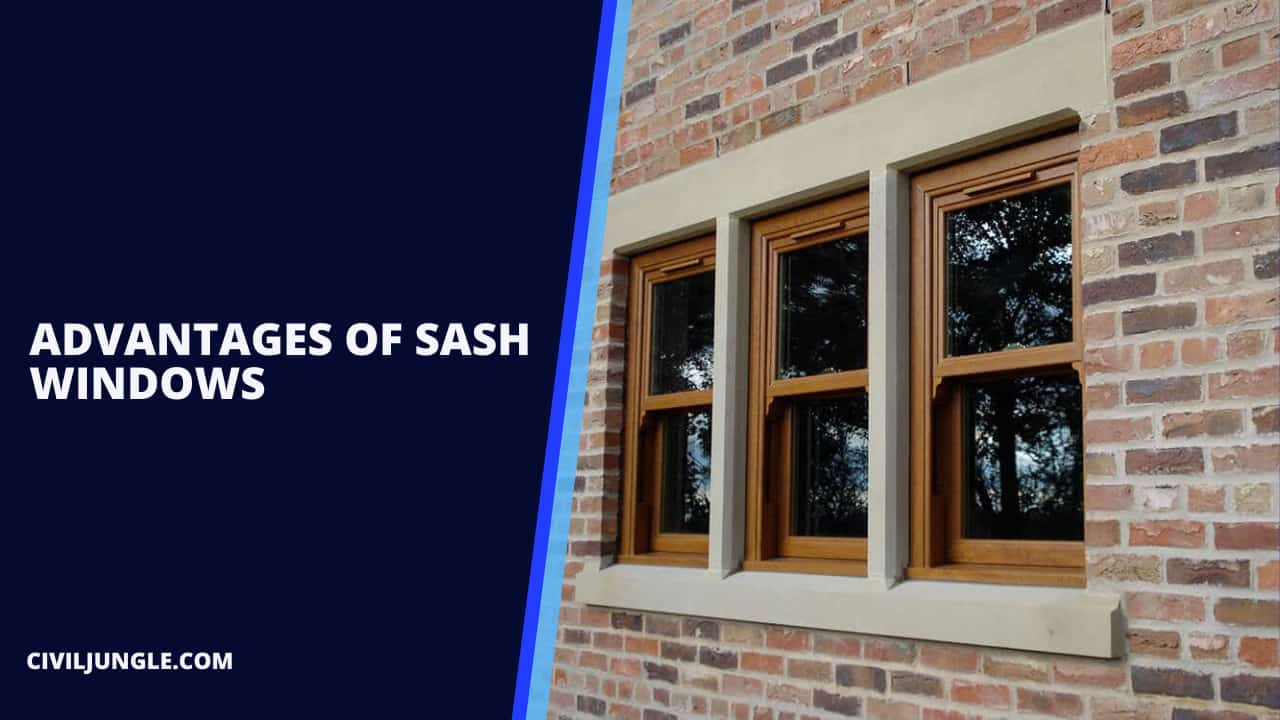
They Carry Off Well
When it comes to aesthetic value, a sash window can’t be matched by anything else. They can increase the value of a building and recoup its initial cost by providing an aesthetically pleasing, classic aesthetic.
Despite its classic appearance, the sash window can be used in a wide variety of applications. Sash windows are nearly universally appealing, looking well in everything from a modern loft to a classic farmhouse.
Secure and Safe
Safety from intruders is yet another advantage of sash windows. Due to the fact that only one sash can be opened at a time, sliding windows are much more challenging to climb through than casement windows.
In addition, additional security elements, such as locks and kid safety devices, can be easily implemented.
Minimal Upkeep
Maintenance for aluminum and uPVC sash windows is virtually non-existent, and the same is true for their casement counterparts.
While the former are powder-coated at the factory, the latter are left in their original white color.
Both sanding and varnishing them are unnecessary (though you might need to occasionally replace the internal cord).
Windows in inconvenient locations are excellent candidates for metal or plastic sash windows due to their durability and resistance to warping and rotting.
Disadvantages of Sash Windows

Poor Airflow
Despite this, there are a few issues with sash windows that should be taken into consideration. Air circulation is one such thing.
The glass can only be collapsed to the size of a single panel since sash window panels are designed to slide behind one another, like sliding doors. As a result, there may be more condensation on the inside of the windows.
Double Hung Sash Windows
The box frame of a double-hung sash window contains two movable sash panels. This allows the window to be opened from either the bottom or the top, depending on which panel is being used.
However, the lower sash of single-hung sash windows can be opened to let in fresh air.
What Are Sash Windows Frames Made From?

In contrast to its original wooden construction, modern window frames can be fashioned from a wide range of materials to accommodate a wide range of preferences, needs, and budgets.
uPVC Sash Windows

Colored or painted plastic is used to create the sash design on uPVC windows, giving the illusion of a wooden frame.
Even though they can’t be reused, uPVC sash windows can be very energy-efficient.
Aluminium Casement Windows

Aluminum sash windows, which are strong and long-lasting, are a great choice for those who value safety and security.
While these windows are more expensive than uPVC sash windows, they are recyclable and are designed to last for many years with no upkeep.
Sash windows made of aluminum are typically considered less aesthetically attractive than their wood counterparts.
Timber Frame Sash Windows

Sash windows with timber frames come in a variety of wood species.
Pine: economical and not always unpleasant, pine makes for a great aesthetic choice but requires a lot of care if you want it to last a long time.
Oak is a classic English material; it is sturdy, elegant, and long-lasting. Oak windows are sturdy, reliable, and long-lasting.
A contemporary wood harvested in South America, red grandis is an eco-friendly option.
Although it’s a soft wood, don’t underestimate it! Red Grandis is extremely resilient and will serve you well for many years with no upkeep, all while boosting your home’s safety and efficiency.
Accoya is a brand name for a type of contemporary wood called acacia. Accoya is carbon neutral because it is grown in New Zealand from renewable resources and processed in the Netherlands.
The procedure of treating the wood renders it extremely durable and resistant to the effects of moisture and temperature change on expansion and contraction.
This ensures that Accoya® will live for generations, even in harsh environments like the depths of the ocean.
Accoya®, like Red Grandis, can give your windows superior thermal performance and security.
Can Sash Windows Have Double Glazing?
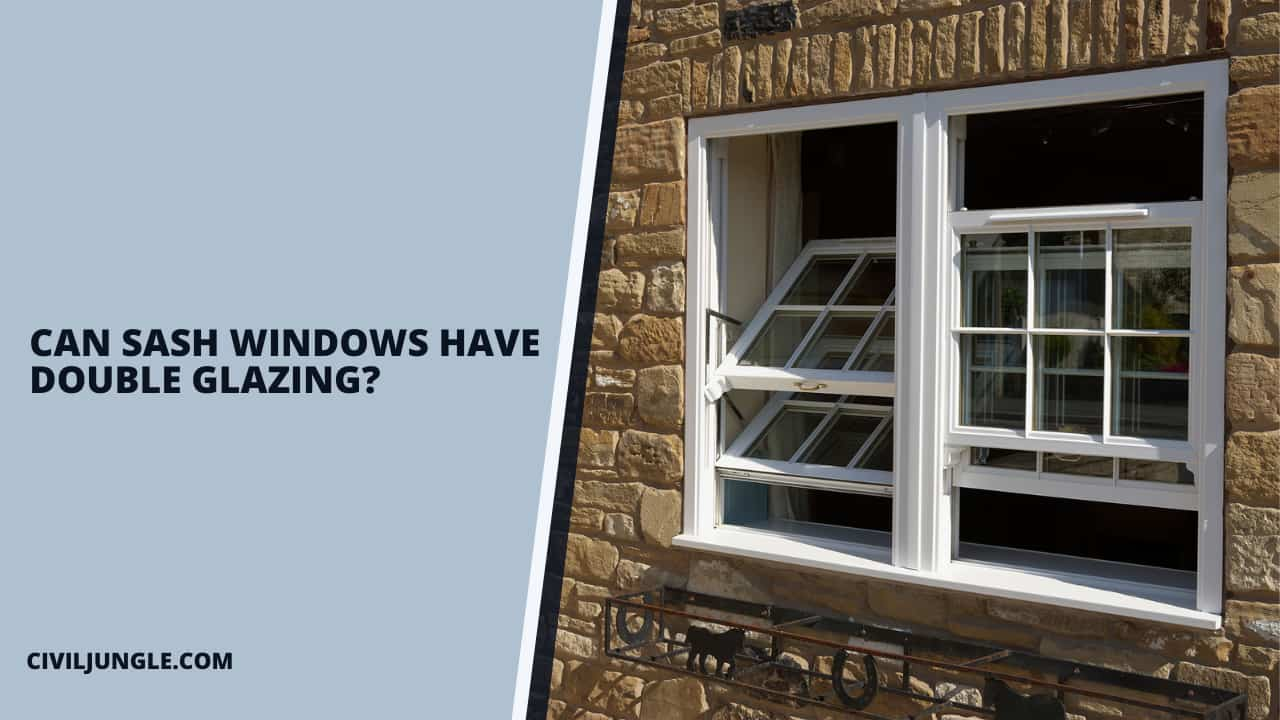
These days, two-pane glass is standard in sash windows. One can choose from a variety of double-glazing options, including:
Traditional Double-Siding Windows
Standard double glazing, which consists of two panes of glass separated by a sealed chamber, is substantially more energy efficient than single-glazed windows.
Narrow Glazed Windows
It is common practice to use inert gases like Krypton or Xenon to fill the gap between the panes of glass in slim double glazing.
When compared to the 16–20 mm gap between panes in conventional double glazing, this one is only 5–6 mm.
Standard single-pane windows aren’t as aesthetically beautiful or energy efficient as their slim double-pane counterparts.
Glazing Utilising a Vacuum
Vacuum Glass is the next advancement in window technology after standard double-pane glass. Clearly, the space between the glass is airless.
The void is so tiny, at around.06mm, since there is nothing there and you can’t have more or less of nothing. The insulation properties of vacuum glass are unparalleled.
Sash Windows Cost

The price of double-paned sash windows can change significantly based on factors such as the type of glass used, the window’s size, and the level of craftsmanship involved in its production and installation.
Dual-paned sash windows made from softwood start at around £500 apiece.
It is reasonable to expect to pay more for high-quality products that have a longer useful life, require less maintenance, and provide much higher levels of efficiency, security, and environmental responsibility.
It is rare to find a company that will provide a quote for replacing sash windows without first conducting a full examination and site investigation.
Can You Just Replace the Window Sash?
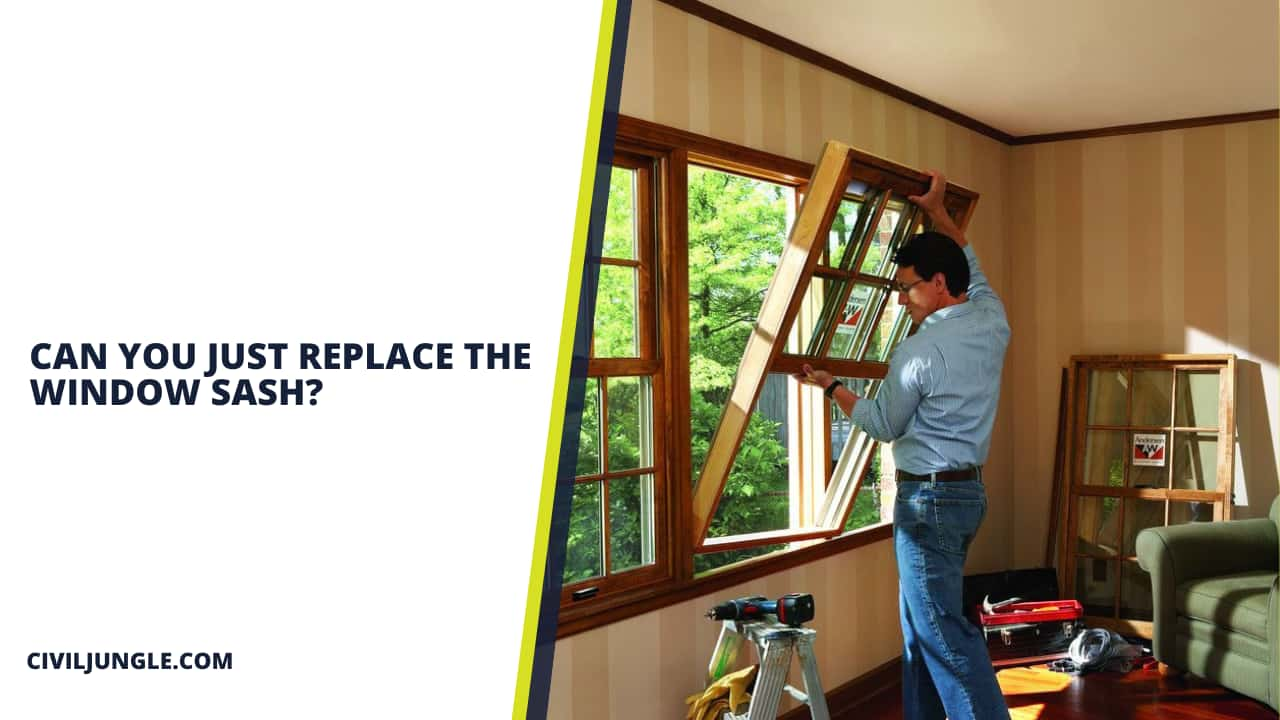
There are many options available for replacing windows, which you will want to investigate if you have a broken or decaying one.
Options vary according to the state of your windows. A pocket window replacement is performed when the existing window frames are in good condition and the window itself is replaced.
On the other hand, full-frame replacement windows are the way to go if your frames are showing their age. In most cases of damaged window glass, a complete window replacement is unnecessary.
If the window sash is the only thing that’s damaged, and the damage is contained in one area, you can get away with just replacing the sash.
It may be necessary to hire a window replacement service or contractor to come in and do major repairs, or perhaps to replace the entire window.
This occurs most often when the damage goes beyond the window itself, or when the sash in question is of the fixed-in-place variety (not merely a window sash that is stuck in place due to paint or expansion).
When conducting extensive renovations that may affect or involve the window, it is more cost-effective to replace it.
What Is a Window Sash on a Casement Window?
A window’s sash is simply the part of the window that holds the glass and keeps it in place. Generally, the sash can be moved outward with the help of a casement operator. Most often, casement windows have their hinges on the side, however, sometimes the hinges are located on the top.
What Is a Double Hung Sash Window?
A double-hung window, also commonly referred to as a double-sash window, is a type of window that has two operable sashes that slide up and down. There are two main operable parts of a double-hung window — the top sash and the bottom sash. They are both able to open to provide ventilation.
What Does Sash Mean in Windows?
The sash is the name given to the frame that contains the glass, and there will usually be a top and a bottom sash in a typical window. If we are going to be specific, the full title of a sash window is a ‘vertical double-hung box-framed sliding sash window’!
What Is Sash in Upvc Windows?
Simply put, a “sash” is a sliding element that allows a window to be opened or closed without any of the structure or glazing having to move inwards or outwards. These windows are made up of two complete window frames that slide independently of each other within a larger frame.
What Is Window Sash Meaning?
A window sash is the part of the window that holds the glass and the framework around the glass to keep it in place. Window sashes are fitted into the window frame and may or may not be movable. Most windows in newer homes are sash windows.
What Is a Split Sash Window?
These sashes can either have single sheets of plate glass or many separate panes of glass divided by muntins. These dividers are typically made of wood in older houses, but can theoretically be made of almost any material. The number of panes of glass in each sash can further organize the window into a specific type.
What Is a Barn Sash Window?
Barn sashes have a true divided lites of glass with contoured grids. Individual panes of heavy glass for each lite. Sash designed to have equal size stiles and top rail, with a traditional wider bottom rail. Vinyl window profiles are extruded from virgin PVC compounds. Constructed of bright white UV stable vinyl.
What Is a Sliding Sash Window?
Sash windows are vertically opening windows generally associated with traditional architecture and design. A sash window consists of two framed window sashes – one positioned in front of the other. This is more specifically referred to as a sliding sash window.
What Is a Window Sash Cord?
What is Sashcord? Collins dictionary defines sash cord as: “a cord attached to either side of a sliding sash, having balancing weights (sash weights) so that the window can be raised or lowered easily.” This is the American definition – the British one, rather disappointingly, is much less helpful.
What Is the Window Sash and Frame?
The sash is the moveable part of a window made up of the vertical and horizontal frame that holds the glass. Check Rail. On a double-hung window, the check rail is the part where the bottom part of the upper sash and the upper part of the lower sash come in contact. Also known as the middle of the window. Glass.
What Is a Dummy Sash?
Fixed window panes with ‘dummy’ sashes imitate the look of opening windows, making all the visible panes sit in line. Also known as fake sashes, they only serve a decorative purpose rather than a functional one.
How to Open a Sash Window?
A traditional sliding sash window is opened by unlocking the window catch, so it is left in the open position. You can find this on the top of the sash. You then press upwards with the palm of your hands to separate the sash from the windowsill.
Different Types of Sash Windows
There are 3 main styles of sash window to choose from; your choice will depend on which suits you home’s aesthetics and, potentially, which period it dates from. Georgian: feature ‘six over six’ panes. Victorian: feature a ‘two over two’ grid design. Edwardian: include panes which are ‘six over two’ in design.
What Is the Difference Between Sash and Casement Windows?
Casement windows open via a hinge, whereas sash windows traditionally slide over one another using a pulley system. While casement and sash windows are the two most popular styles, they often come in a number of different forms, which should be carefully selected based upon the type of property you own.
Sash Window Glass Replacement Cost
Sash windows cost between $100 and $950 per sash to replace. Each sash is a single pane of glass (either single- or double-hung) that opens and closes vertically. Sash windows can also open horizontally, but in order for them to be considered sash windows, they need to have moving panels.
What Are the Parts of a Sash Window Called?
Here are the components of a window sash:
- Pane. The window pane is the piece, or pieces, of glass in your window.
- Window Rail. The top and the bottom parts of sashes are called the window rails.
- Spacers.
- Sash Lock.
- Lift.
- Weatherstripping.
Can You Just Replace Window Sash?
If the problem is only that of broken glass—and the damage is localized—you can replace the window sash only. In some cases, you’ll need to replace the whole window or have a window company or contractor to come in to make extensive repairs.
Like this post? Share it with your friends!
Suggested Read –

